Email marketing is one of the most cost-effective tools in the small business arsenal. It allows you to engage customers, nurture leads, and drive conversions—all while maintaining a high ROI. However, small businesses can face challenges such as budget limitations, building quality email lists, crafting engaging content, and measuring campaign success.
This guide provides practical, actionable tips to help small business owners, marketing managers, and entrepreneurs overcome these hurdles and craft a winning email marketing strategy.
Why Email Marketing Matters
Email marketing is more than just sending promotional messages. It’s about building meaningful relationships and creating loyal customers. Studies show that for every $1 spent on email marketing, businesses see an average ROI of $36. That’s hard to ignore.
But how do you ensure your email marketing actually drives results? Here are some tips broken into actionable steps.
1. Build and Grow a High-Quality Email List
A quality email list is the backbone of any successful campaign. But building one isn’t about quantity—it’s about relevance. Instead of purchasing email lists (a big no-no), focus on organically growing your subscriber base.
Tips to Grow Your list:
- Add a Signup Form to Your Website: Make it easy for visitors to subscribe to your emails with an eye-catching signup form on your homepage or blog.
- Offer an Incentive: Provide value in exchange for an email address, such as a discount, free ebook, or exclusive content.
- Gather Emails Offline: If you own a physical store, encourage customers to join your email list at checkout with a printed QR code or a sign-up tablet.
- Run Contests: A giveaway is a great way to attract people to sign up quickly.
Case in Point
A local bakery doubled its email subscribers by offering a 10% discount for signups. The result? Every promotional email they sent out led to a 20% increase in foot traffic and total sales.
2. Segment Your Audience for Better Engagement
Not all your subscribers are the same, so why send everyone the same email? Use segmentation to group your audience based on shared traits like location, purchase history, or interests. This ensures your emails resonate more with the recipient.
Types of Segmentation:
- Demographics (age, gender, location)
- Purchase Behavior (first-time customer, repeat buyer, high-spender)
- Engagement Level (highly engaged vs. inactive subscribers)
Success Story
A small e-commerce store segmented their email list into active and inactive subscribers. They launched a personalized “we miss you” email campaign for inactive users, offering exclusive incentives. The result? A 15% conversion rate among recipients, reactivating old customers.
3. Create Engaging and Valuable Content
The key to standing out in crowded inboxes is crafting emails that feel relevant and valuable to your subscribers.
Types of Emails That Work:
- Welcome Emails: Make a great first impression by giving new subscribers a warm greeting, introducing your brand, and offering a special perk.
- Newsletters: Share behind-the-scenes news, helpful tips, or upcoming product launches.
- Promotional Emails: Incentivize purchases or visits by offering discounts, bundles, or free shipping.
- Nurture Campaigns: Use a series of emails to educate and guide potential customers toward your business.
Tips for Writing Engaging Emails:
- Start with a Catchy Subject Line: Make it personal, exciting, or use FOMO (e.g., “Your Exclusive Offer Awaits!”).
- Keep It Short and Sweet: People skim—use bullet points, short paragraphs, and strong calls to action (CTAs).
- Personalize Your Message: Address recipients by name and recommend products or services tailored to their preferences.
Example
A consulting firm used personalized email automation to educate its audience about their services and address pain points. This approach resulted in a 30% increase in qualified leads.
4. Leverage Automation to Save Time
Small businesses often lack the resources for dedicated email marketing staff. Email automation can be your secret weapon to save time while maintaining efficiency.
Automated Workflow Ideas:
- Abandoned Cart Reminders for e-commerce brands
- Follow-Up Emails after a purchase or service
- Birthday or Anniversary Discounts to delight customers
- Welcome Drip Campaign for new subscribers to nurture them
Tip
Tools like Mailchimp, ActiveCampaign, or Klaviyo can automate these workflows seamlessly.
Example
An online gift shop launched an abandoned cart series that sent reminder emails with free shipping offers within 24 hours. These emails converted 25% of abandoned carts into sales.
5. Monitor Deliverability and Stay Out of the Spam Folder
Your beautifully crafted emails won’t matter if they end up in the dreaded spam folder.
Tips to Improve Deliverability:
- Use a Verified Domain for sending emails.
- Avoid Spammy Words like “FREE” in subject lines.
- Send Emails Consistently on the same days and times.
- Include an Option to Unsubscribe to maintain user trust.
By keeping your email list clean (regularly removing unengaged subscribers), you’ll also improve deliverability and email performance.
6. Measure Performance and Optimize
The beauty of email marketing is that every campaign provides actionable insights. Use metrics to evaluate your campaigns and make adjustments for better results.
Important Metrics:
- Open Rate (% of people who open your email)
- Click-Through Rate (CTR) (% of people who click a link in your email)
- Conversion Rate (% of people who complete a desired action, like making a purchase)
- Bounce Rate (% of emails that fail to reach recipients)
Tip
A/B testing subject lines, CTAs, and email layouts can help you find what truly resonates with your audience.
Example
A non-profit organization tested two versions of its email asking for donations. One used a general appeal, while the other focused on a specific beneficiary story. The latter not only engaged readers but also helped exceed their fundraising goal by 25%.
Final Thoughts
Email marketing can feel like a daunting task, especially for small businesses with limited time and resources. But by implementing these steps—building a quality list, segmenting your audience, creating engaging content, leveraging automation, and measuring success—you’ll unlock a tool that’s cost-effective and impactful.
Start small. Test what works best for your business and tweak over time.
Want to take your email marketing strategy to the next level? Try out one of our recommended tools and take the stress out of creating campaigns that convert. With the right approach, you’ll turn emails into one of your biggest business growth drivers!
We Want To Talk To You About Your Marketing Goals.
Let’s Supercharge Your Online Growth!












